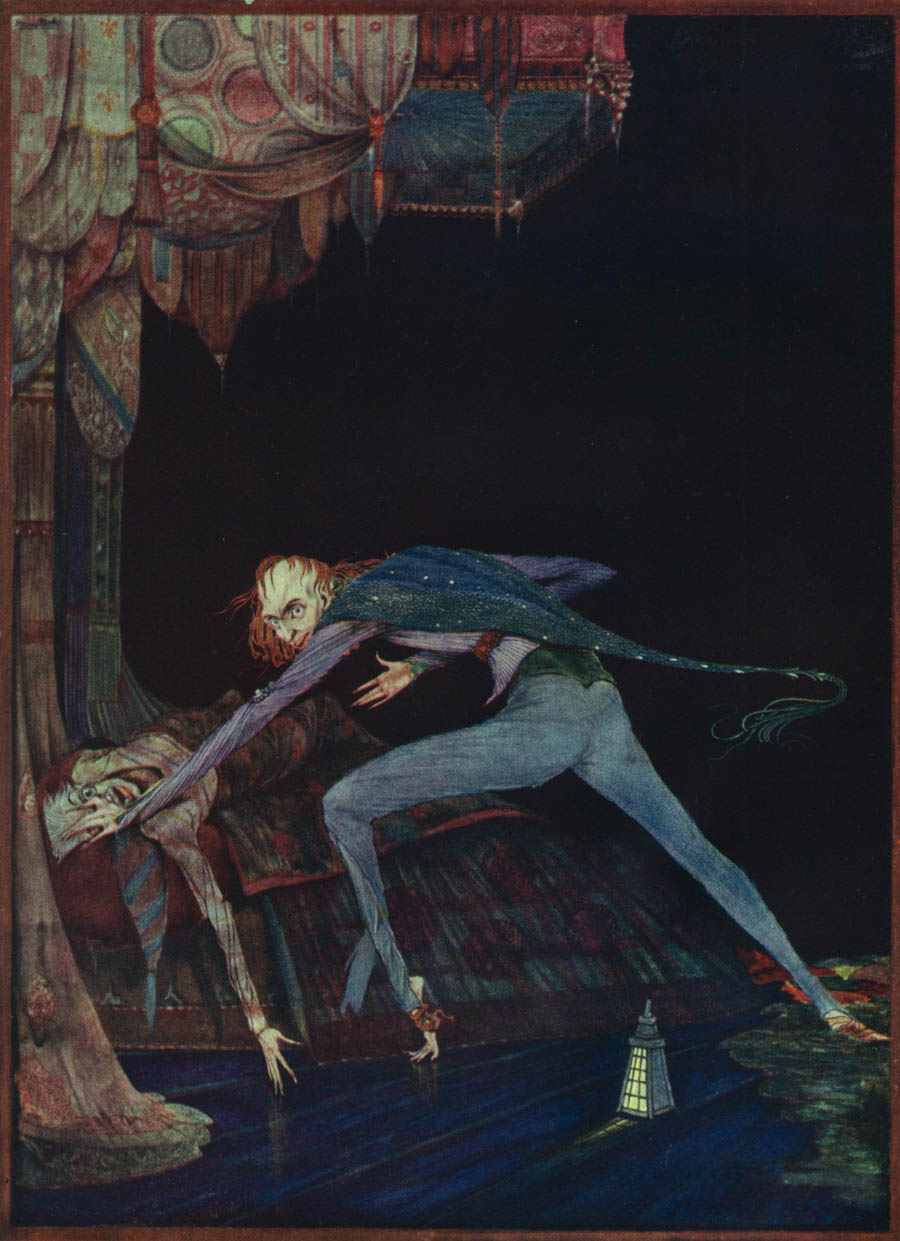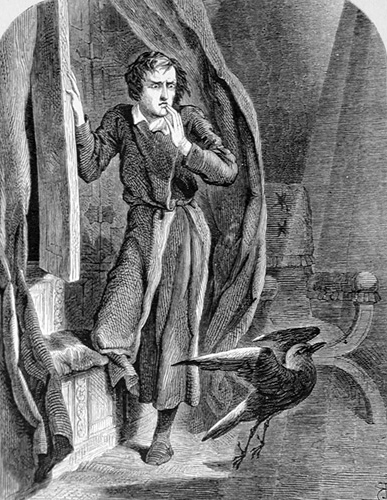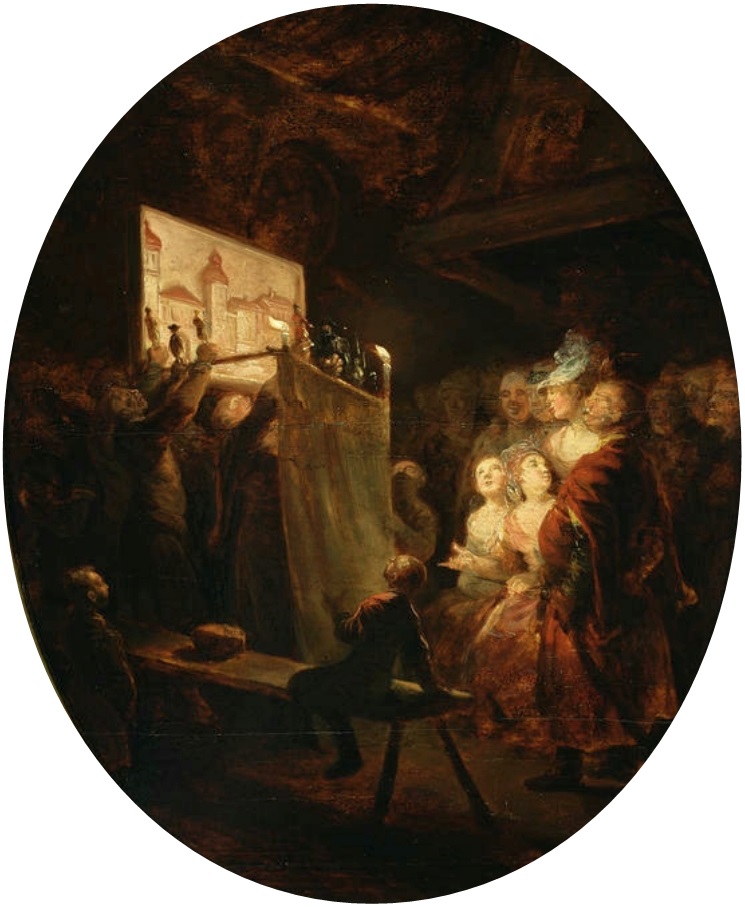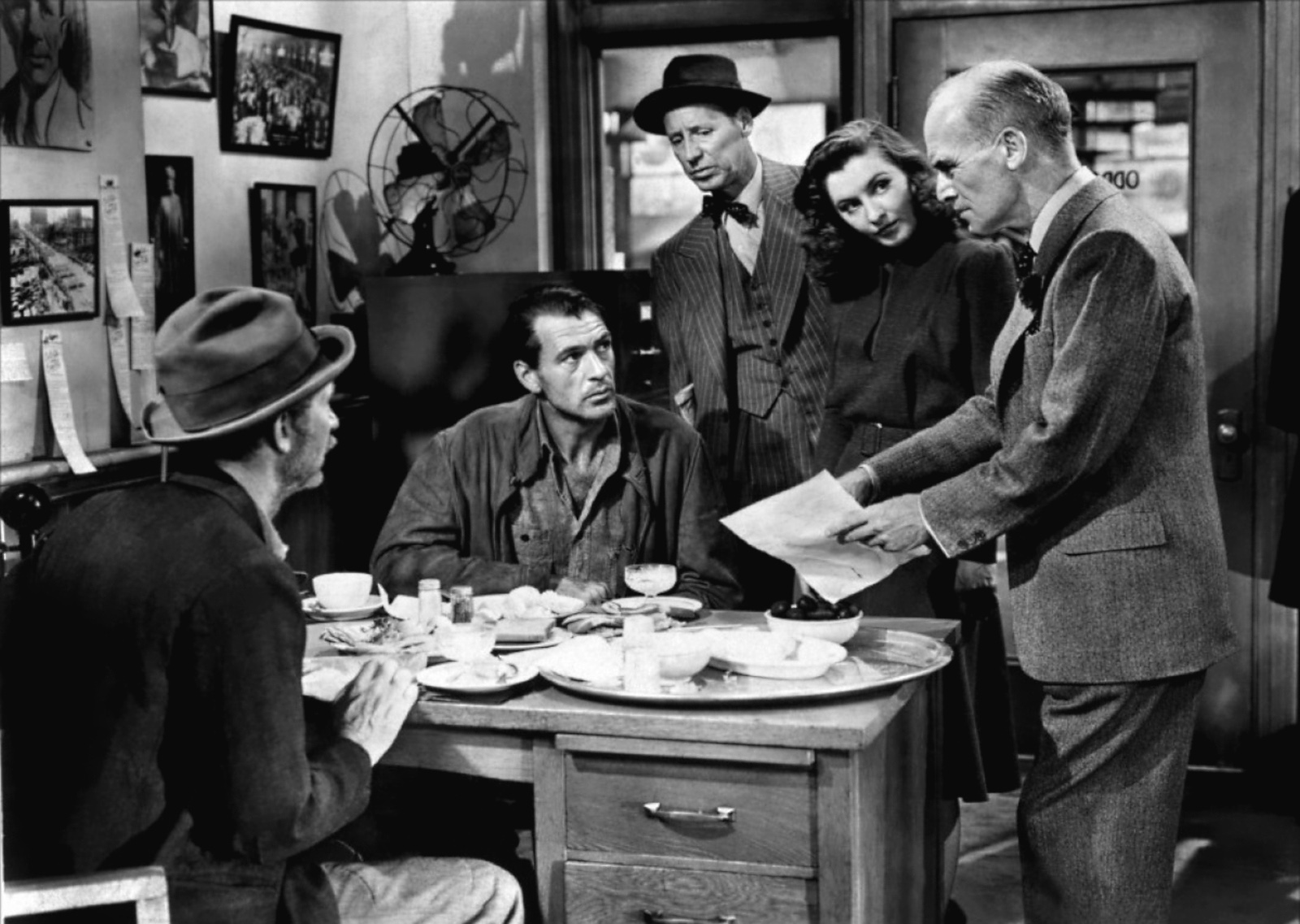|
Edgar Allan Poe In Television And Film
American poet and short story writer Edgar Allan Poe has had significant influence in television and film. Many are adaptations of Poe's work, others merely reference it. Film Adaptations * Perhaps most well known are the films directed by Roger Corman and starring Vincent Price such as ' House of Usher, the first in the series. The following movie, The Premature Burial, starred Ray Milland and Hazel Court, with Price notably absent. '' The Haunted Palace'' (1963) adopts the title of Poe's poem, but is more closely derived from the works of H. P. Lovecraft, in particular ''The Case of Charles Dexter Ward''. Corman hoped to remove himself from Poe adaptations and turned ''The Raven'' into a comedic effort. Likewise, the middle segment in ''Tales of Terror'', based on " The Black Cat" and "The Cask of Amontillado", is intended to be humorous. *In the 1930s and 1940s, Universal Studios adapted several Poe stories—and used others as inspirational jump-off points—primarily starri ... [...More Info...] [...Related Items...] OR: [Wikipedia] [Google] [Baidu] |
Edgar Allan Poe
Edgar Allan Poe (; Edgar Poe; January 19, 1809 – October 7, 1849) was an American writer, poet, editor, and literary critic. Poe is best known for his poetry and short stories, particularly his tales of mystery and the macabre. He is widely regarded as a central figure of Romanticism in the United States, and of American literature. Poe was one of the country's earliest practitioners of the short story, and considered to be the inventor of the detective fiction genre, as well as a significant contributor to the emerging genre of science fiction. Poe is the first well-known American writer to earn a living through writing alone, resulting in a financially difficult life and career. Poe was born in Boston, the second child of actors David and Elizabeth "Eliza" Poe. His father abandoned the family in 1810, and when his mother died the following year, Poe was taken in by John and Frances Allan of Richmond, Virginia. They never formally adopted him, but he was with them wel ... [...More Info...] [...Related Items...] OR: [Wikipedia] [Google] [Baidu] |
Juan López Moctezuma
Juan López Moctezuma (1929 – August 2, 1995) was a Mexican film director and actor. He was born in Mexico City in 1929. During his career he directed five films, all in the genres of supernatural horror and suspense: ''The Mansion of Madness'' (1973), ''Mary, Mary, Bloody Mary'' (1975), ''To Kill a Stranger'' (1984), ''El Alimento del Miedo'' (1994), and his most recognized and controversial work, ''Alucarda'' (1977), which tells the story of a satanic possession in a Catholic convent. In 1993 he was admitted to a psychiatric hospital in Mexico City because of Alzheimer's disease. He died on August 2, 1995. Filmography *''The Mansion of Madness'' (''La Mansión de la Locura'') (1973) *'' Mary, Mary, Bloody Mary'' (1975) *''Alucarda ''Alucarda'' (Spanish: ''Alucarda, la hija de las tinieblas'', or ''Alucarda, the daughter of darkness'') is a 1977 English-language Mexican supernatural horror film directed by Juan López Moctezuma, and starring Tina Romero, Claudio Brook, Su . ... [...More Info...] [...Related Items...] OR: [Wikipedia] [Google] [Baidu] |
Giallo
In Italian cinema, ''Giallo'' (; plural ''gialli'', from ''giallo'', Italian for yellow) is a genre of mystery fiction and thrillers that often contains slasher, crime fiction, psychological thriller, psychological horror, sexploitation, and, less frequently, supernatural horror elements. This particular style of Italian-produced murder mystery horror-thriller film usually blends the atmosphere and suspense of thriller fiction with elements of horror fiction (such as slasher violence) and eroticism (similar to the French '' fantastique'' genre), and often involves a mysterious killer whose identity is not revealed until the final act of the film. The genre developed in the mid-to-late 1960s, peaked in popularity during the 1970s, and subsequently declined in commercial mainstream filmmaking over the next few decades, though examples continue to be produced. It was a predecessor to, and had significant influence on, the later American slasher film genre. Literature In the ... [...More Info...] [...Related Items...] OR: [Wikipedia] [Google] [Baidu] |
The Tell-Tale Heart
"The Tell-Tale Heart" is a short story by American writer Edgar Allan Poe, first published in 1843. It is related by an unnamed narrator who endeavors to convince the reader of the narrator's sanity while simultaneously describing a murder the narrator committed. The victim was an old man with a filmy pale blue "vulture-eye", as the narrator calls it. The narrator emphasizes the careful calculation of the murder, attempting the perfect crime, complete with dismembering the body in the bathtub and hiding it under the floorboards. Ultimately, the narrator's actions result in hearing a thumping sound, which the narrator interprets as the dead man's beating heart. The story was first published in James Russell Lowell's ''The Pioneer'' in January 1843. "The Tell-Tale Heart" is often considered a classic of the Gothic fiction genre and is one of Poe's best known short stories. The specific motivation for murder (aside from the narrator's hatred of the old man's eye), the relationship ... [...More Info...] [...Related Items...] OR: [Wikipedia] [Google] [Baidu] |
The Raven
"The Raven" is a narrative poem by American writer Edgar Allan Poe. First published in January 1845, the poem is often noted for its musicality, stylized language, and supernatural atmosphere. It tells of a distraught lover who is paid a mysterious visit by a talking raven. The lover, often identified as a student,Meyers, 163Silverman, 239 is lamenting the loss of his love, Lenore. Sitting on a bust of Pallas, the raven seems to further antagonize the protagonist with its constant repetition of the word " Nevermore". The poem makes use of folk, mythological, religious, and classical references. Poe claimed to have written the poem logically and methodically, with the intention to create a poem that would appeal to both critical and popular tastes, as he explained in his 1846 follow-up essay, "The Philosophy of Composition". The poem was inspired in part by a talking raven in the novel '' Barnaby Rudge: A Tale of the Riots of Eighty'' by Charles Dickens.Kopley & Hayes, 192 ... [...More Info...] [...Related Items...] OR: [Wikipedia] [Google] [Baidu] |
Annabel Lee
"Annabel Lee" is the last complete poem composed by American author Edgar Allan Poe. Like many of Poe's poems, it explores the theme of the death of a beautiful woman.Meyers, Jeffrey. ''Edgar Allan Poe: His Life and Legacy''. New York: Cooper Square Press, 1992. p. 243. The narrator, who fell in love with Annabel Lee when they were young, has a love for her so strong that even angels are envious. He retains his love for her even after her death. There has been debate over who, if anyone, was the inspiration for "Annabel Lee". Though many women have been suggested, Poe's wife Virginia Eliza Clemm Poe is one of the more credible candidates. Written in 1849, it was not published until shortly after Poe's death that same year. Synopsis The poem's narrator describes his love for Annabel Lee, which began many years ago in a "kingdom by the sea". Though they were young, their love for one another burned with such intensity that even angels were envious. For this reason the narrator bel ... [...More Info...] [...Related Items...] OR: [Wikipedia] [Google] [Baidu] |
DVD-Video
DVD-Video is a consumer video format used to store digital video on DVD discs. DVD-Video was the dominant consumer home video format in Asia, North America, Europe, and Australia in the 2000s until it was supplanted by the high-definition Blu-ray Disc. Discs using the DVD-Video specification require a DVD drive and an MPEG-2 decoder (e.g., a DVD player, or a computer DVD drive with a software DVD player). Commercial DVD movies are encoded using a combination MPEG-2 compressed video and audio of varying formats (often multi-channel formats as described below). Typically, the data rate for DVD movies ranges from 3 to 9.5 Mbit/s, and the bit rate is usually adaptive. DVD-Video was first available in Japan on November 1, 1996 (with major releases beginning December 20, 1996), followed by a release on March 24, 1997 in the United States—to line up with the 69th Academy Awards that same day. The DVD-Video specification was created by DVD Forum and can be obtained from D ... [...More Info...] [...Related Items...] OR: [Wikipedia] [Google] [Baidu] |
Marionette
A marionette (; french: marionnette, ) is a puppet controlled from above using wires or strings depending on regional variations. A marionette's puppeteer is called a marionettist. Marionettes are operated with the puppeteer hidden or revealed to an audience by using a vertical or horizontal control bar in different forms of theatres or entertainment venues. They have also been used in films and on television. The attachment of the strings varies according to its character or purpose. Etymology In French, ''marionette'' means "little Mary". In France, during the Middle Ages, string puppets were often used to depict biblical events, with the Virgin Mary being a popular character, hence the name. In France, the word ''marionette'' can refer to any kind of puppet, but elsewhere it typically refers only to string puppets. History Ancient times Puppetry is an ancient form of performance. Some historians claim that they predate actors in theatre. There is evidence that they we ... [...More Info...] [...Related Items...] OR: [Wikipedia] [Google] [Baidu] |
Frank Capra
Frank Russell Capra (born Francesco Rosario Capra; May 18, 1897 – September 3, 1991) was an Italian-born American film director, producer and writer who became the creative force behind some of the major award-winning films of the 1930s and 1940s. Born in Italy and raised in Los Angeles from the age of five, his rags-to-riches story has led film historians such as Ian Freer to consider him the " American Dream personified".Freer 2009, pp. 40–41. Capra became one of America's most influential directors during the 1930s, winning three Academy Awards for Best Director from six nominations, along with three other Oscar wins from nine nominations in other categories. Among his leading films were '' It Happened One Night'' (1934), '' Mr. Deeds Goes to Town'' (1936), '' You Can't Take It with You'' (1938), and ''Mr. Smith Goes to Washington'' (1939). During World War II, Capra served in the U.S. Army Signal Corps and produced propaganda films, such as the '' Why We Fight ... [...More Info...] [...Related Items...] OR: [Wikipedia] [Google] [Baidu] |
The Bell System Science Series
''The Bell System Science Series'' consists of nine television specials made for the AT&T Corporation that were originally broadcast in color between 1956 and 1964. Marcel LaFollette has described them as "specials that combined clever story lines, sophisticated animation, veteran character actors, films of natural phenomena, interviews with scientists, and precise explanation of scientific and technical concepts — all in the pursuit of better public understanding of science." Geoff Alexander and Rick Prelinger have described the films as "among the best known and remembered educational films ever made, and enthroning Dr. Frank Baxter, professor at the University of Southern California, as something of a legend as the omniscient king of academic science films hosts." AT&T and its subsidiary Bell Telephone System had a history of sponsoring broadcasting such as the ''Bell Telephone Hour'', which was a weekly radio program of classical and Broadway music. AT&T's advertising agenc ... [...More Info...] [...Related Items...] OR: [Wikipedia] [Google] [Baidu] |
Mimsy Farmer
Merle "Mimsy" Farmer (born February 28, 1945) is an American actress, artist and sculptor. She began her career appearing in several Hollywood studio films, such as '' Spencer's Mountain'' (1963) and '' Bus Riley's Back in Town'' (1965), followed by roles in the exploitation films ''Devil's Angels'' and '' Riot on Sunset Strip'' (both 1967). Farmer went on to establish herself as an international performer, starring in numerous European films, including the dramas '' More'' (1969) and '' Strogoff'' (1970), as well as multiple Italian giallo films: Dario Argento's ''Four Flies on Grey Velvet'' (1971), '' The Perfume of the Lady in Black'' (1974), ''Autopsy'' (1975), and Lucio Fulci's '' The Black Cat'' (1981). Early years Farmer was born Merle Farmer on February 28, 1945 in Chicago, Illinois. Her father was a news reporter for the ''Chicago Tribune'' and a writer for radio. Her mother was French. Her nickname, which she later took as her stage name, is derived from a line in Lewi ... [...More Info...] [...Related Items...] OR: [Wikipedia] [Google] [Baidu] |
Patrick Magee (actor)
Patrick George Magee (née McGee, 31 March 1922 – 14 August 1982) was a Northern Irish actor. He was noted for his collaborations with playwrights Samuel Beckett and Harold Pinter, sometimes called "Beckett's favorite actor," as well as creating the role of the Marquis de Sade in the original stage and screen productions of '' Marat/Sade''. Known for his distinctive voice, he also appeared in numerous horror films and in two Stanley Kubrick films – '' A Clockwork Orange'' (1971) and ''Barry Lyndon'' (1975) – and three Joseph Losey films – ''The Criminal'' (1960), '' The Servant'' (1963) and '' Galileo'' (1975). He was a member of the Royal Shakespeare Company from 1964 to 1970. Critic Antonia Quirke posthumously described him as "a presence so full of strangeness and charisma and difference and power," while scholar Conor Carville wrote that Magee was " navant-garde bad-boy" and "very important and unjustly forgotten figure who represents an important aspect of the ... [...More Info...] [...Related Items...] OR: [Wikipedia] [Google] [Baidu] |








